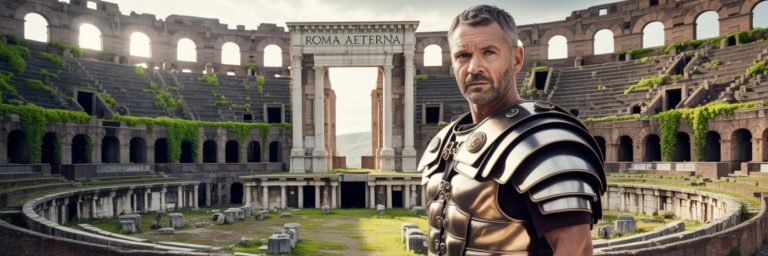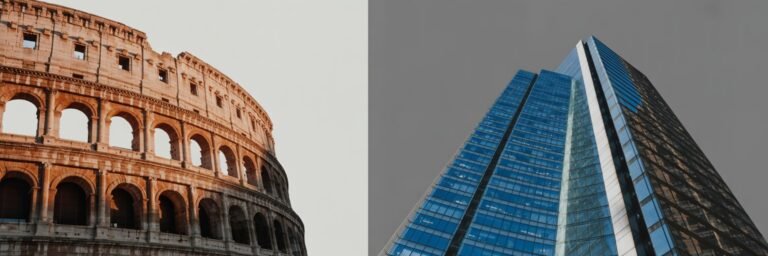INTRODUCTION
The dissolution of the ancient world’s most powerful civilization didn’t occur overnight. To encapsulate this marquee event in human history is a monumental task. Just as the Roman Empire stood on millennia of historic foundations, its collapse too, after centuries of power, encompasses a cascade of complex elements. Built on an amalgam of political strategies, economic factors, and social turmoil—it is a tale of fallen empires, brilliant emperors, and the indomitable human spirit.
HISTORICAL BACKGROUND
Bursting into life following the death of Julius Caesar, the Roman Empire occupied a span from 27 BC to AD 476—a tenure unparalleled by any Western empire. Under Augustus, the first Roman Emperor, and his successors, the Romans conquered much of the known world, ranging from the British Isles to the Near East, enveloping numerous cultures. Rome was a melting pot, its enduring charm the result of a variety of influences—Greeks, Etruscans, and others who dwindled under its vast roof.
By the 2nd century, the city of Rome was not merely a city; It epitomized a manner of living, an unparalleled intellectual, cultural, and political fulcrum. The Pax Romana—’Roman Peace’—highlighted the golden age of Roman history. But as Rome extended, cracks began to appear, the Empire’s size becoming its nemesis. The latter part of the 3rd century was tumultuous, plagued with short-lived rulers, economic crisis, and foreign invasions.
THEORIES AND INTERPRETATIONS
Numerous theories articulate the downfall of the Roman Empire, many dwelling on the composite collapse—military, economic, social, and political, while others consider external forces.
Historian Edward Gibbon, in his seminal work “The History of the Decline and Fall of the Roman Empire,” posited moral decay as a significant cause. Gibbon averred that as Rome’s moral fiber eroded, so too did its ability to handle external pressures. Over-reliance on slave labor and a diminishing middle class in favor of the titled elites crippled the economy, culminating eventually in a dilution of the traditional values of citizenship.
Another predominant theory postulates that constant pressure from barbarians eroded the Empire’s outer limits. Large scale migrations of the Goths, lured by Rome’s wealth, induced a series of battles, culminating in the catastrophic Battle of Adrianople in AD 378, where the Roman army suffered a devastating defeat.
MYSTERIES AND CONTROVERSIES
The fall of an Empire is rarely uncontroversial. The role of Christianity in Rome’s collapse is contentious. Some claim Rome’s conversion to Christianity, replacing the traditional Roman pantheon, weakened the Empire. However, others unswervingly counter this, asserting Christianity was a unifying force amid disarray.
Environment and disease are also implicated in Rome’s endgame. Historians argue that climatic change—decreased summertime temperatures, adversely impacted farming, swelling the economic woes, and widespread malaria made Rome susceptible to outside invaders.
The intriguing question of the fall or transformation of the Roman Empire is also intensely debated. Historian Peter Heather argues for a rather transformative perspective, underscoring the continuity between the Roman and Byzantine periods.
SYMBOLISM AND CULTURAL SIGNIFICANCE
The fall of the Roman Empire resonates widely in global cultural consciousness—serving as a poignant reminder of impermanence. The decline operates as a metaphor in literature and arts, underpinning narratives of human hubris leading to downfall. It resonates in films and television, from ‘Gladiator’ to ‘Rome,’ emphasizing the cycle of rise-and-fall in human history.
MODERN INVESTIGATIONS
Applying a multifaceted lens, scholars today are leveraging interdisciplinary methodologies for deciphering historical events. Paleoclimatologists and biologists are assessing the role of climate change and disease. Anthropologists and sociologists bring socio-cultural perspectives to probe into the societal upheavals that marked Rome’s downturn.
Economic historians argue that inflation, fuelled by years of coinage debasement, was a critical factor in Rome’s downfall. The role of leadership is also under scrutiny, with some arguing the incompetence, corruption, and tyranny of leaders—in stark contrast to the vision of earlier emperors—hastened the decline.
LEGACY AND CONCLUSION
The echoes of Rome reverberate through time, its collapse symbolizing the frailty of even the mightiest, shining a light of caution onto subsequent superpowers. Many facets of contemporary society—administrative systems, legal principles, language, architecture—all bear the indelible mark of the Roman Empire.
Despite its end, the Roman Empire’s legacy is far from extinct. It reminds us of a time when human ambition knew no bounds, where a city expanded into a colossal empire, subsuming cultures, inventing societal structures, and creating an epoch of artistic grandeur and intellectual advancements.
In the narrative of the Roman Empire’s collapse, we uncover lessons beyond nomenclature and periodization. We learn about resilience and evolution in the face of adversity, about the impermanence of power and prestige, and the timelessness of knowledge and artistry. Every layer unearthed, every theory proposed, enriches our grasp of history, inspiring us to learn, adapt, and evolve. Truly, to understand our past is to illuminate our way forward.






